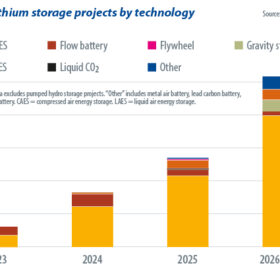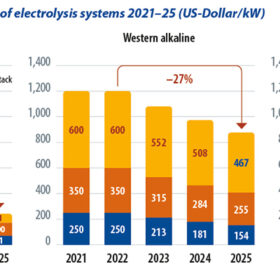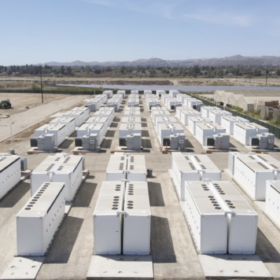Innovations in EV charging infrastructure
With the introduction of fast-charging stations, sophisticated battery technology, intelligent charging schemes, and bidirectional charging capabilities, electric vehicles are now more feasible, practical, and affordable than in the past.
India is seeing record demand for rooftop solar systems
India is seeing record demand for rooftop solar both from residential and industrial consumers. While the recently announced Pradhan Mantri Suryodaya Yojana (PMSY) Scheme is driving adoption among residential consumers, industries seek to add clean energy to meet climate goals amid falling panel prices.
Environmental lifecycle assessment of PERC solar modules
IEA PVPS Task 12 analyzes the environmental impact of passivated emitter and rear cell (PERC) technology in PV installations in comparison to the monocrystalline silicon technology (AI-BSF) and the trend towards installing horizontal single-axis tracker systems as opposed to fixed tilt systems.
Solar module prices remain steady amid unchanged market fundamentals
In a new weekly update for pv magazine, OPIS, a Dow Jones company, provides a quick look at the main price trends in the global PV industry.
Polysilicon prices persist in potential trend downward, governed by unfavorable factors
In a new weekly update for pv magazine, OPIS, a Dow Jones company, offers bite-sized analysis on solar PV module supply and price trends.
Can anything topple lithium-ion?
The need for long-duration energy storage in a net-zero world is undeniable but with conventional battery prices tumbling, can anything dislodge the mainstream grip of lithium ion? S&P Global’s Susan Taylor provides an update on non-lithium storage technologies.
Electrolyzer prices – what to expect
In addition to the cost of electricity, the price of hydrogen depends largely on the up-front investment cost of the electrolyzer. The lower the full-load hours, the greater the impact. Analyst BloombergNEF (BNEF) sees a number of different possible pathways for the market to develop.
Lithium battery recycling: Opportunities, challenges, and sustainable practices
India’s ascent in the Li-ion battery recycling industry can be a win-win for its clean energy ambitions and economic development. By addressing the existing challenges and embracing opportunities, India can be a beacon of light for the rest of the world.
How green credits and green loyalty programs are shaping a sustainable future
Green credits and green loyalty programs represent a burgeoning movement towards sustainability that transcends traditional environmental activism. They embody a partnership between businesses and consumers, where every green choice is celebrated and rewarded.
Perovskite thin film: Out with the old, in with the new
Silicon-perovskite tandem solar requires optimization of both approaches, and embodies the weaknesses of each. Meanwhile, the use of pure thin-film devices offers a cheaper, simpler, and more sustainable PV solution for the United States.















